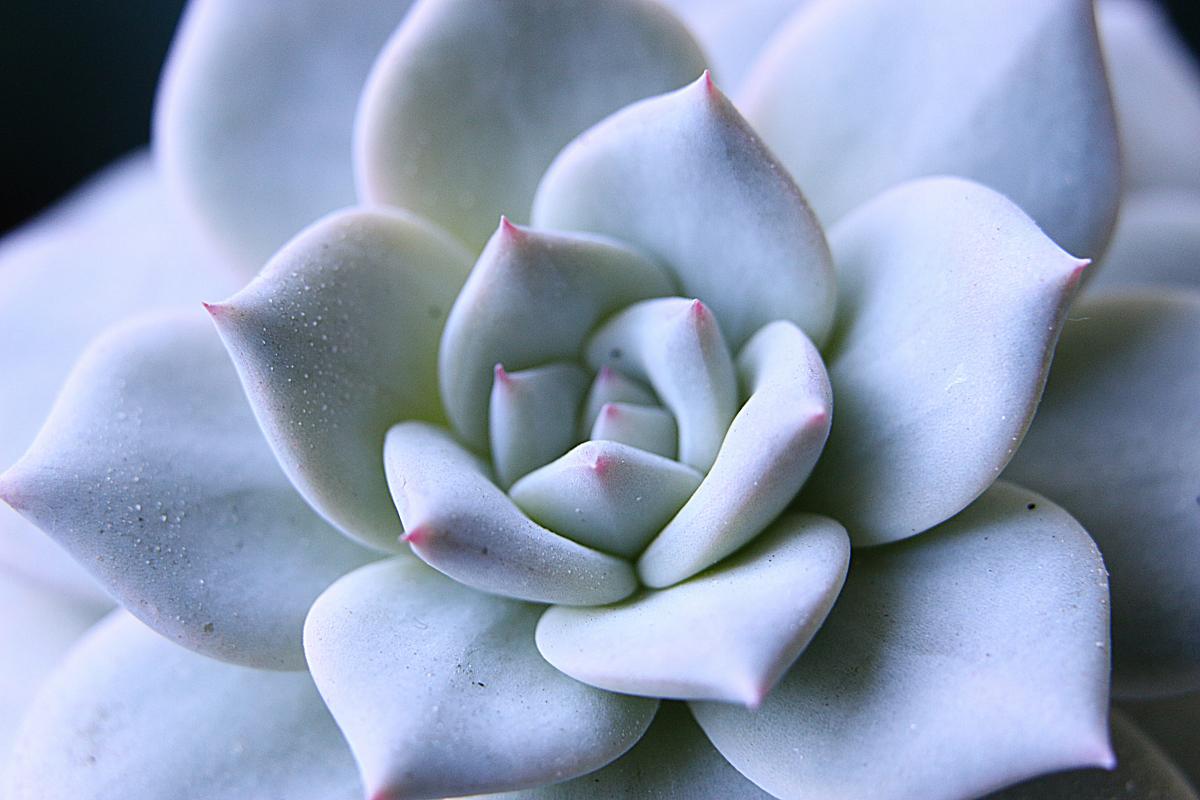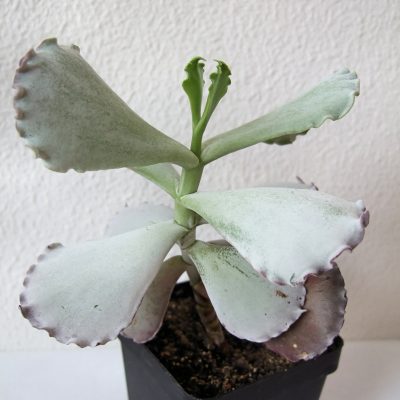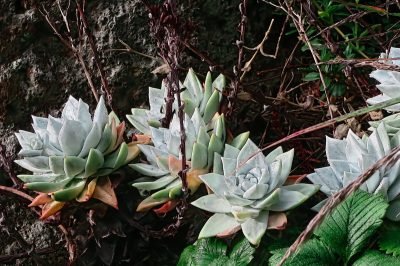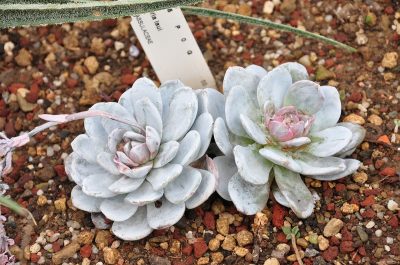
Pure white succulents are very rare indeed. But there are many species that are coated in a wax which is what makes them look like this. This wax is important for them as it protects them from solar radiation, which can be very intense in their places of origin.
But what are their names? Because, of course, knowing them will help us to know more about them, and therefore, to take better care of them. As well, then we are going to present them to you.
Selection or types of white succulents
If you want to decorate your home with white succulent plants, you have to know there are several with which you can enjoy a lot. These are:
caputia tomentosa

Image - Flickr / Arthur Chapman
La caputia tomentosa is a succulent known as woolly senecio, snow succulent or by its previous scientific name, Senecio haworthii. It is a native plant of the Cape, in South Africa, that has fleshy, thin leaves that grow almost vertically and covered with wax. Reaches a height of 10-25 centimeters, and although it blooms, its flowers are the same color as the plant, so they can go unnoticed.
Cotyledon orbiculata

Image - Wikimedia / JMK
El Cotyledon orbiculata it is a succulent shrub that can reach 1,5 meters in height. It is endemic to South Africa, and develops a branching stem from which glaucous green leaves sprout with a red margin. Both its foliage and stem are covered with white wax. It blooms in spring, producing orange or yellow bell-shaped flowers emerging from a two-foot-tall stem.
Cotyledon undulata

Image - Flickr / Zruda
El Cotyledon undulata it is a plant that could be labeled as a white succulent. It is a small shrub native to Africa that reaches a height of 50 centimeters covered by whitish wax. It branches from the base, and has scallop-shaped leaves, which is a type of sea clam. This species is very curious, because the greater the solar radiation, the more reddish its leaves become, starting at the edges, and then on the underside of the leaves, as it is what is most exposed. Its flowers are orange or yellow.
Dudleya brittonii

Image - Wikimedia / Zruda
La Dudleya brittonii It is a succulent native to Mexico that forms rosettes of fleshy leaves, with a more or less triangular shape, covered with whitish wax. It can reach a height of up to 1 meter, but it is difficult for it to exceed 30 centimeters. The flowers arise from a stem 30-35 centimeters high, and are greenish.
Farinosa dudleya

Image - Flickr / John Rusk
La Farinosa dudleya is a non-cactus succulent native to Oregon and California. It grows forming a rosette of very light green leaves, with a diameter of up to 6 centimeters and an approximate height of 5 centimeters.. It has small, but very numerous yellow flowers.
Echeveria sings

Image - Wikimedia / Marco Wentzel
La Echeveria sings it is a white succulent of good size, which reaches a diameter of 30 centimeters by 50 centimeters in height. In reality, more than white it is glaucous green in color, but depending on the amount of wax it has on its leaves it will look more or less whitish. Its flowers bloom in spring, and they are pink.
echeveria laui

Image - Wikimedia / Roland zh
La echeveria laui is a plant called rosette, native to Mexico, which grows up to 30 centimeters in diameter by about 5-7 centimeters in height. Its leaves are fleshy, dark green, covered with an almost white wax. It blooms in spring producing a 10-centimeter floral stem, at the end of which also succulent pink flowers sprout.
Senecio candicans 'Angel Wings'

Image - Ruedes Boulets
Sometimes simply called Senecio 'Angel Wings', It is a plant that reaches a height of 1 meter, although it can be lower if it is pruned. It is a variety with green leaves covered with wax or white powder on both sides, with a somewhat serrated margin. Its orange-yellow flowers bloom in winter.
How are they cared for?
White succulents need a series of care that, although not complicated, it is convenient to know:
Location

Image - Wikimedia / Jim Evans
First of all, we will talk about the location, that is, where to put them. It is best to be in a place where there is a lot of natural light, but they can also get used and acclimatise little by little and gradually to direct sun exposure.
The acclimatization process must be done in spring or autumn, as this is when the sun's radiation is less intense. It will consist of putting them one hour, either early in the morning or late in the afternoon, exposed to the sun directly, and increasing the exposure time by one hour over the next few weeks.
They are very interesting to have in gardens with succulents, where they will bring color and exoticism to the area.
Can they be had at home?
There are those who have them as indoor plants. But the white succulents they need a lot of lightHence, it is advisable to grow them on balconies, terraces, patios, or at least in a room where there are windows through which the sun's rays enter without difficulty.
Of course, if there are frosts in your area, you will have to protect them at home.
Soil or substrate
- Flower pot: to be filled with a mixture of peat and perlite (for sale here) at 50%, or with soil for cacti and succulents (for sale here). It is important that the pot has holes in its base so that the roots do not rot.
- Garden: they can be planted in the ground as long as the soil is light and does not get waterlogged.
Irrigation
The watering of succulents is the most complicated and, at the same time, the easiest since they must be watered when the soil is completely dry. To find out, it can be very useful to use a moisture meter, which when introduced into the earth will indicate how wet or dry it is.
Another way to know, if we have them in pots, is to take it as soon as you water them and again after a few days. Since the cactus soil weighs little, when it is dry we will notice that the pot hardly weighs.
Subscriber
Fertilizing white succulents is recommended during spring and summer. For this, specific fertilizers for cacti and succulents will be used (such as this).
Transplant

Image - Flickr / cultivar413
They have to change pot every 2 or 3 years approximately. The ideal time for this is spring. And if you want to plant them in the ground, you have to do it when temperatures exceed 18ºC.
Rusticity
All we've seen withstand heat up to 40ºC, as well as cold. But frost can harm them, so it is advisable to have them at home if the temperatures drop below -2ºC.
Did you know the white succulents? What do you think?